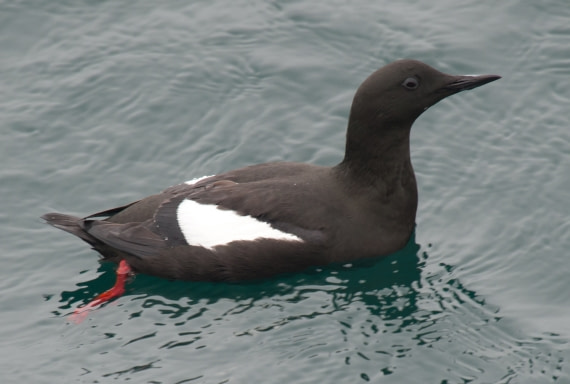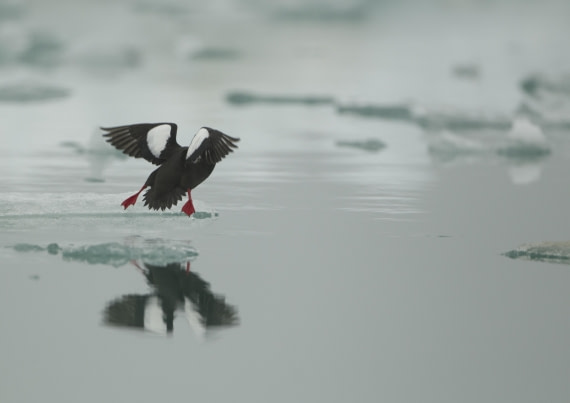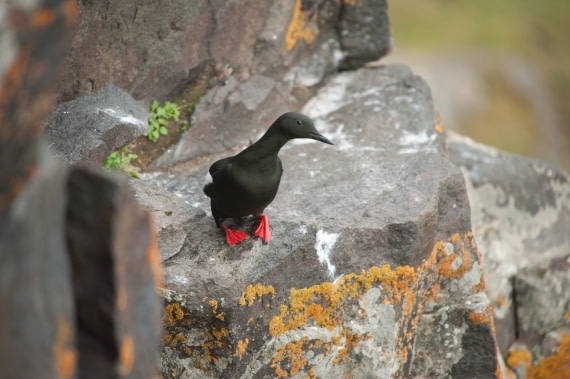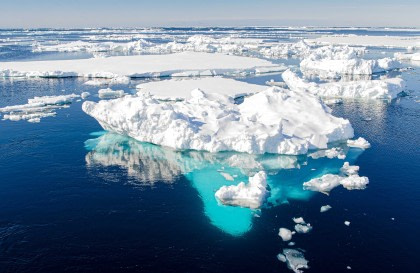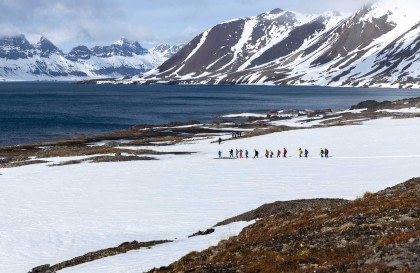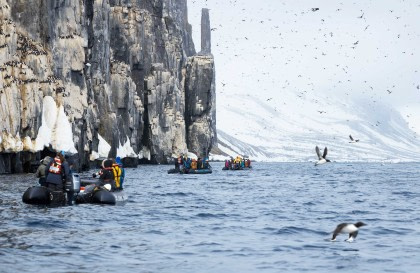Name: Black Guillemot, Guillemot à Miroir, Tystie (Cepphus grylle)
Length: 30 cm.
Weight: 320 to 480 grams.
Location: Arctic coastlines.
Conservation status: Least Concern.
Diet: Fish, crustaceans, marine invertebrates.
Appearance: Black body with black bill, white patch on wings, red feet. During winter, coloration turns to a white base with a darker back.
How do Black Guillemots feed?
Black Guillemots are divers, diving in relatively shallow waters, using their wings to swim. They can stay underwater for about 21/2 minutes. Smaller prey are swallowed underwater, while larger prey held crosswise in the bill are brought to the surface.
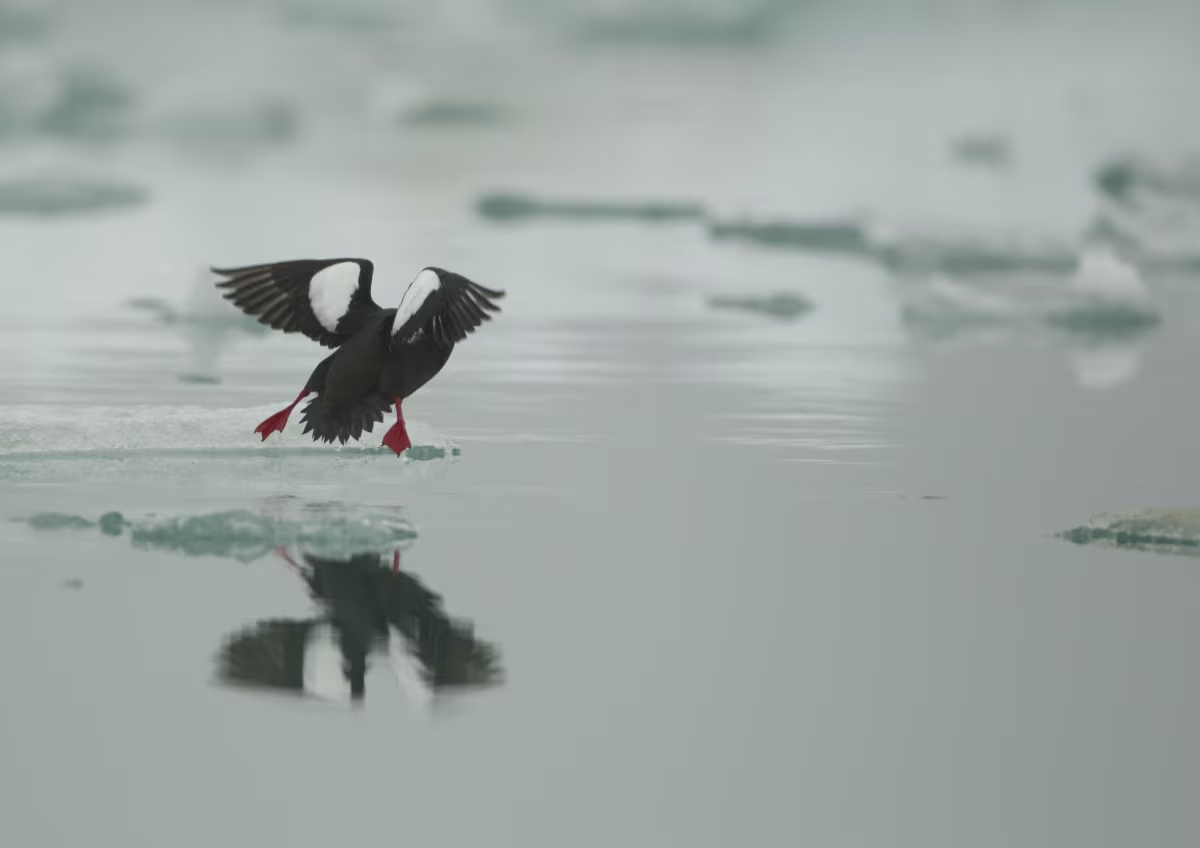
Are Black Guillemots social?
Outside of the mating season, Black Guillemots are generally solitary or found in pairs. However, they will come together over feeding areas.
How fast do Black Guillemots fly?
Black Guillemots generally fly at speeds of about 20 km per hour.

What are Black Guillemot birthing rituals like?
Black Guillemots reach sexual maturity at 4 years.
They breed in colonies that get denser further north where food is more available. The largest colonies can number up to 10,000 breeding pairs.
They create nests on rocky coastlines, often using pebbles, shells, seaweed, or no material at all, placed among rocks with some form of overhanging roof.
To court a female, the male stands tall with its bill pointing downward and struts around the female with exaggerated steps.
Up to 2 eggs are laid. Both parents take turns incubating the eggs for about a month while the other forages. After hatching, both parents alternate caring for the chick and foraging. Chicks leave the nest 1 to 2 months after hatching, heading to the water where they care for themselves until they can fly.
How long do Black Guillemots live?
Black Guillemots live for about 11 years in the wild.
How many Black Guillemots are there today?
There are an estimated 400,000 to 700,000 individual Black Guillemots in the world today.
Do Black Guillemots have any natural predators?
Black Guillemot young and eggs are prey to rats, foxes, and minks.
7 Bountiful Black Guillemot Facts
- Black Guillemots are a member of the Alcidae family (or Auks) such as the Puffin.
- Some Black Guillemots show a preference for which direction they hold a fish in their bills. Biologists speculate this relates to their preferred feeding grounds.
- Winter plumage of Black Guillemots becomes whiter further north they are found.
- Black Guillemots are one of the only birds that breed on Surtsey, a new volcanic island off Iceland.
- There are five subspecies of Black Guillemot:
- Cepphus grylle arcticus – Northeast U.S.A., southeast Canada, Greenland, Britain, Scandinavia, White Sea
- Cepphus grylle faroeensis – Faroe Islands
- Cepphus grylle grylle – Baltic Sea
- Cepphus grylle islandicus – Iceland
- Cepphus grylle mandtii – Northeast Canada, Svalbard, Siberia, Alaska
- Black Guillemots and other diving birds are typically found in colder regions because fish swim faster as water temperature increases, while diving birds maintain the same swimming speed.
- Black Guillemots in deeper waters further from shore are often non-breeding.

